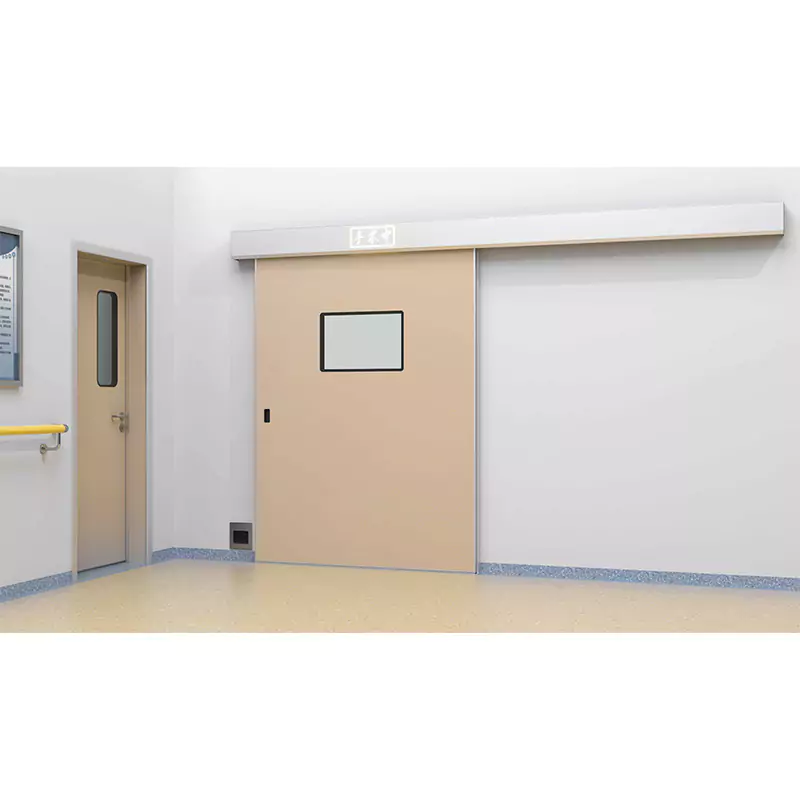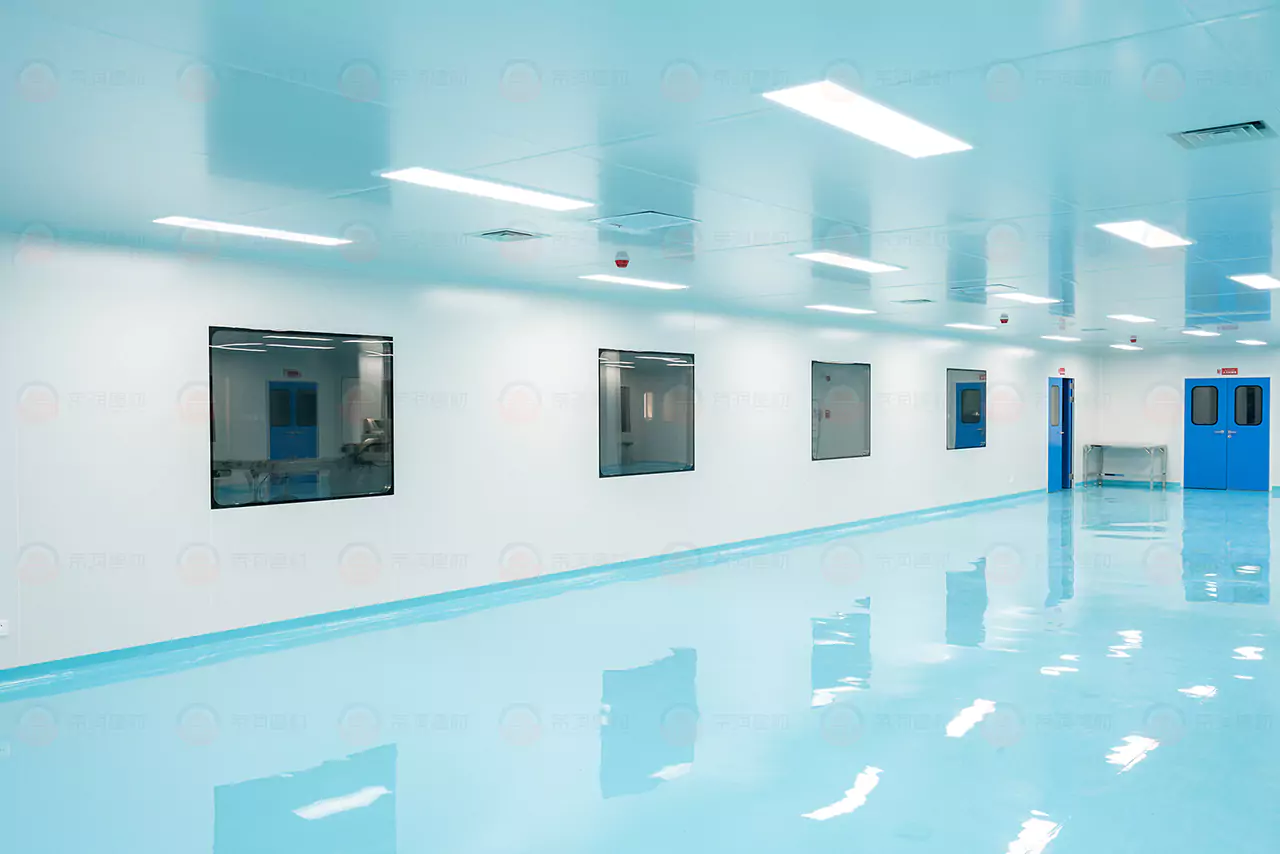Effective Techniques to Control Relative Humidity in Clean Rooms
Time : May 22, 2025 View : 1732
Keeping exact moisture content within set ranges is crucial for sectors such as microelectronics and drug manufacturing. Modern climate control setups featuring instant tracking and drying mechanisms guarantee ideal settings. Tailored approaches meet unique demands. Correct upkeep and choosing suitable materials (such as water-repelling partitions) stop pollution and electrical charge problems.
Why Managing Moisture Percentage Matters in Sterile Spaces
How Does Air Moisture Affect Clean Room Operations?
Air moisture percentage is a key factor in sterile spaces. It significantly affects their efficiency and operation. RH changes how floating particles act, alters static charges, and impacts organism development. For example, dry air boosts static energy. This can harm fragile electronic parts and disrupt exact production methods. On the other hand, damp conditions encourage microbial multiplication. This threatens the purity and hygiene that are critical for fields like medicine and hospitals.
Keeping perfect RH values makes certain sterile spaces satisfy strict environmental consistency needs. This is particularly important for areas like chip making and drug production. Here, tiny changes might cause faulty items or unclean conditions.
What Problems Arise from Poor Moisture Regulation?
Badly managed dampness can cause serious issues for both procedures and outputs in sterile spaces. Elevated RH values cause water buildup on surfaces. This leads to equipment rust and product pollution. Alternatively, insufficient moisture makes substances fragile, causes shrinking, and raises static electricity dangers.
For instance, in food preparation areas, too much wetness speeds up fungus development and food decay. Insufficient dampness may dehydrate products or weaken wrapping strength. These troubles impact both item excellence and user safety.
What Guidelines Exist for Sterile Space Moisture Content?
To guarantee reliable results across different uses, industry rules suggest particular RH spans for sterile spaces. Normally, values from 30% to 60% are kept based on application needs. For example:
- Chip production usually needs 40%-50% RH to reduce static shocks
- Medical labs might keep 45%-55% RH to block microbial growth
- Food plants commonly run at 50%-60% RH to preserve product quality
Following these guidelines helps meet legal requirements while improving workflow productivity.
Main Elements Affecting Air Moisture in Sterile Spaces
How Does Heat Impact Moisture Management?
Heat directly connects to air moisture. Warmer air holds more water vapor. Thus, temperature regulation is key for steady RH values in sterile spaces. Exact climate control systems often manage both heat and dampness together.
For instance, magnesium oxysulfide dividers provide outstanding heat-blocking traits. These help steady temperature shifts inside sterile spaces. This maintains even environmental states vital for delicate processes.

Why Are Air Movement and Fresh Air Supply Important?
Good air circulation and ventilation are essential for controlling air moisture. They help spread conditioned air evenly across sterile spaces. High-performance particle blockers are frequently used to eliminate impurities while keeping proper pressure differences.
Ventilation setups also stop concentrated areas of high or low dampness by moving treated air efficiently. This lowers dangers from water buildup or static accumulation that might disturb activities.
What Are Typical Origins of Dampness and Impurities?
Wetness sources in sterile spaces involve human presence (like breathing), machine outputs, and outside leaks through weak seals. Pollutants such as dirt or bacteria can also enter these ways.
Using modern materials like mineral fiber boards with great water protection cuts these risks. These boards improve building strength and help maintain perfect environmental states by reducing outside water entry.
Modern Methods for Keeping Perfect Dampness Values
To get an exact moisture adjustment, buildings should use a complete plan mixing both active and passive management techniques. Advanced climate systems with built-in dampness control units can self-correct using live sensor information. Well-sealed, sterile space designs help preserve steady states. When picking suitable dampness control tools should consider about needed RH span, room size, and power saving goals. Options include standard chill-based drying to modern absorbent setups for very dry conditions.
How Do Exact Climate Systems Improve Management?
Combining Dryers and Moisture Adders
Current climate systems merge dryers to take out extra water vapor and humidifiers to add moisture when necessary. This twin method guarantees accurate RH control no matter the outside weather conditions.
For example, adding custom cleaning boards with pre-installed channels helps smooth climate part connections. These boards aid quick setup while boosting total system performance.
What Advantages Do Live Tracking Systems Offer?
Instant tracking systems give constant updates on RH values inside sterile spaces. Detectors put strategically around the facility spot changes quickly. This allows automatic corrections through climate controls.
This forward-thinking method reduces stops from environmental changes while ensuring rule obedience always.
Why Apply Absorbent Methods for Better Control?
Absorbent techniques provide top dampness management by soaking up water vapor using special substances like silica beads or treated alumina. These methods work especially well in areas needing very low RH values, like chip making or medicine storage zones.
Their energy-saving function makes them appealing for places wanting to lower running expenses without sacrificing performance needs.
Suggested Methods by LAIRUN for Dampness Regulation
To boost these dampness control systems, proper setup and care are equally important. LAIRUN’s methods include intelligent tracking tech that supplies live information on environmental states. This allows early changes and stops expensive differences. Their systems have modular parts that ease both first assembly and regular upkeep. This guarantees sterile spaces keep exact moisture values during their use period while reducing power use.
Summary of LAIRUN’s New Offerings
Traits and Perks of LAIRUN’s Drying Systems
For ideal dampness control in sterile spaces, material and system selection is vital. Drying setups made for sterile spaces must handle environmental stability, energy savings, and industry rule compliance. A key aspect in modern systems is their connection with exact climate answers, ensuring smooth function and flexibility to changing states.
For instance, adding top-grade boards with heat-blocking features greatly improves system efficiency. These boards reduce heat changes inside the sterile space, directly affecting air moisture values. Also, using flame-resistant and germ-free materials keeps the area secure and clean.
Adjustable Answers for Different Sterile Space Needs
Dampness control demands differ across fields, from medical drugs to microelectronics. Flexible solutions are necessary to meet these varied needs properly. For example, boards with pre-fitted tubes help combine dryers and humidifiers. This design speeds up installation and improves total system operation.
In chip production, where static electricity brings big risks, keeping 40%-50% RH is vital. Made-to-order answers like magnesium oxysulfide center boards give excellent heat blocking and water resistance. Likewise, food processing sites gain from mineral fiber boards that offer top noise reduction while preserving stable conditions.
Specialized Advice Using LAIRUN’s Knowledge
Using years of sterile space tech experience, LAIRUN gives specialized suggestions to solve particular challenges. For example, in zones needing extremely low dampness, absorbent-based systems joined with custom cleaning boards can be used. These setups work well to stop water buildup and microbe multiplication.
Moreover, sterile spaces in medical settings often need materials that are both flame-resistant and germ-proof. Boards made from magnesium sulfate or magnesium oxysulfide centers meet these strict needs while ensuring lasting strength.
Tracking and Upkeep Plans for Continued Performance
Need for Frequent Adjustments and Equipment Inspections
Successful dampness control depends on regular adjustments and maintenance of gear. Precision tools in sterile spaces must be checked often to confirm they work within set limits. This includes sensors monitoring RH values and climate parts managing airflow and heat.
Routine gear checks help find possible troubles before they become major issues. For example, examining seal points in layered boards can block outside water entry. Proper adjustment not only maintains rule compliance but also lengthens important equipment life.
Applying Information-Based Understanding for Early Maintenance
Adding instant monitoring systems lets buildings use data-based insights for early upkeep. Detectors placed throughout the sterile space constantly gather details on environmental states like heat and humidity values. This data is then studied to spot patterns or irregularities that may signal upcoming system faults.
Early upkeep reduces work stops by solving problems beforehand instead of after failure. For instance, noticing a small RH rise might trigger quick dryer or climate setting changes. Such steps ensure continuous operations while keeping the perfect environmental state.
Educating Staff on Gear Use and Crisis Steps
Proper training is essential for workers managing sterile space conditions. This includes knowing how to run drying systems well and reacting to emergencies like sudden RH jumps or machine failures.
Training should cover subjects like regular upkeep methods, problem-solving skills, and emergency plans. Giving staff this knowledge boosts workflow efficiency and ensures safety rule compliance.
FAQs
Q1. Why are magnesium oxysulfide boards perfect for dampness control?
A: Magnesium oxysulfide boards provide outstanding heat blocking and water protection, making them very efficient for maintaining steady RH values.
Q2. How does early upkeep enhance sterile space activities?
A: Early upkeep uses instant tracking to spot possible problems early, allowing proactive fixes that reduce work stops while ensuring consistent environmental stability.
Q3. Why are frequent adjustments important for dampness control systems?
A: Frequent adjustments make sure sensors and climate parts work precisely within set limits, maintaining rule compliance and optimizing performance.






